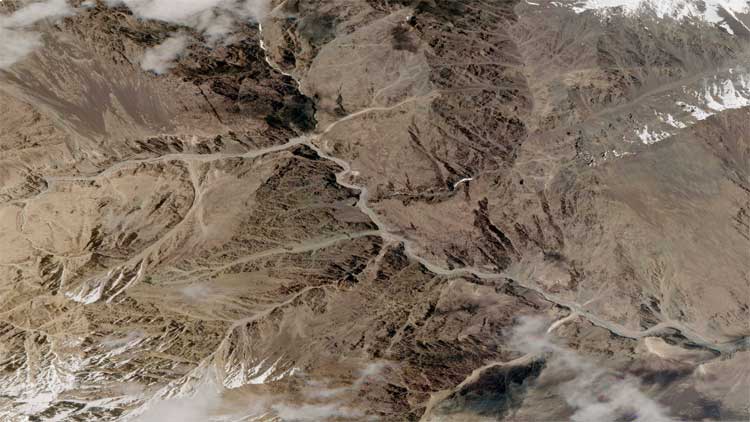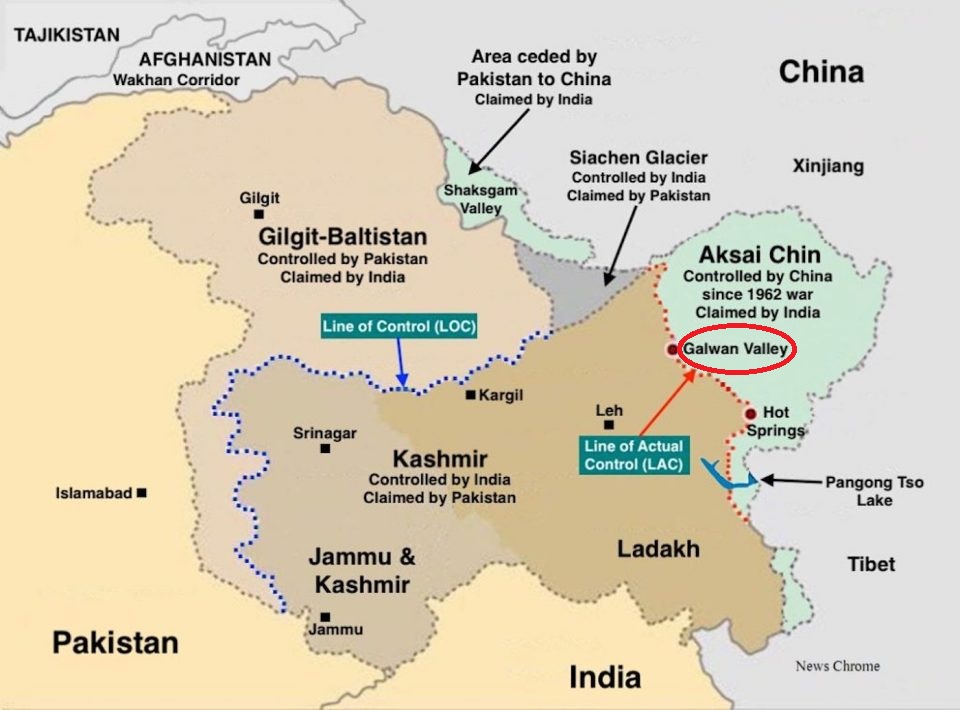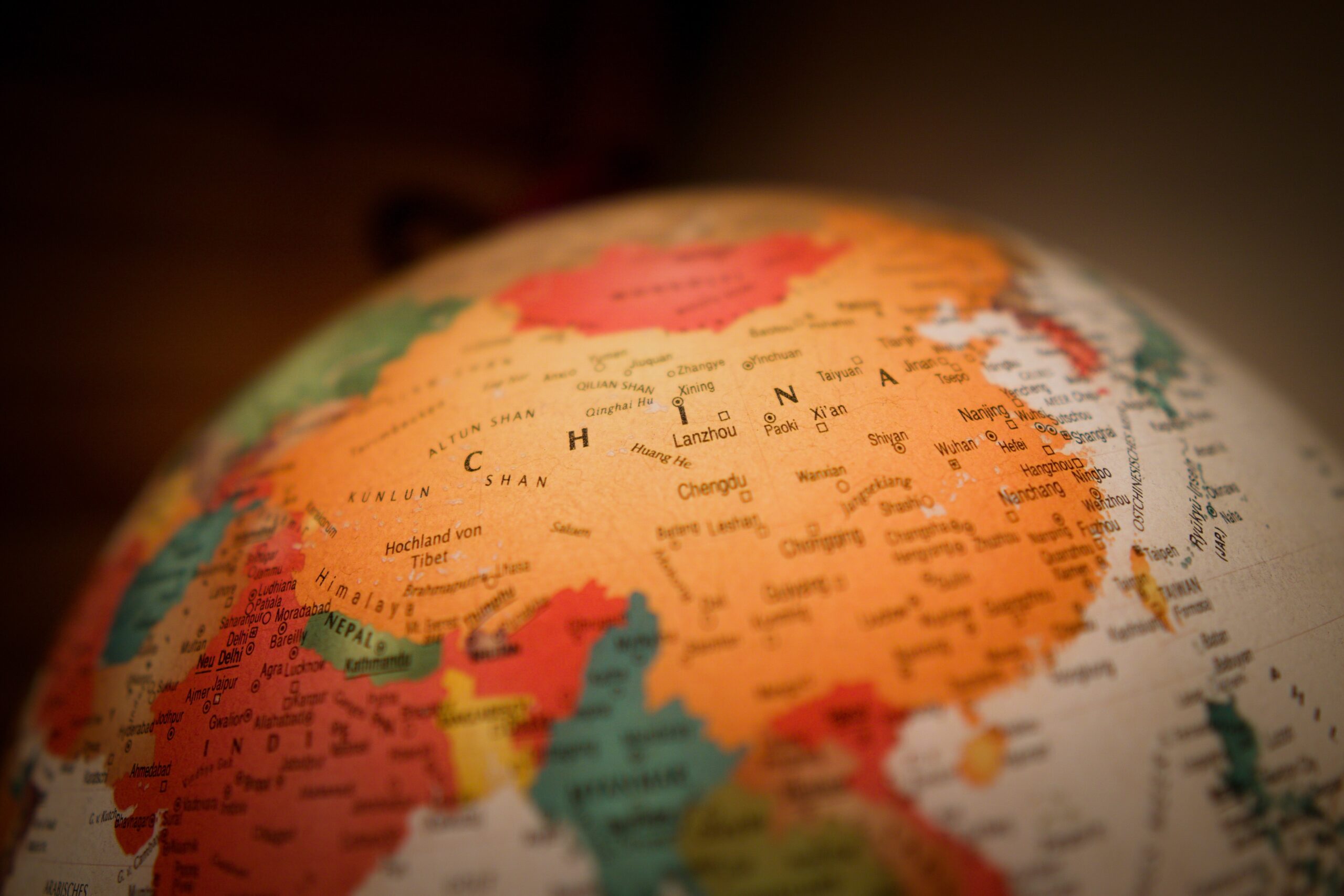Last year on June 15, as the world was just learning to deal with the first wave of the Covid pandemic, China and India were locked in a gruesome conflict around the Galwan river. Ceasing on a regrettable note, the clash witnessed heavy causalities on both sides (While China initially denied the deaths of PLA soldiers, this year in February the Chinese government however confirmed the death of only four PLA soldiers).

The events and attitudes of the two governments, right after this clash, further made abundantly clear that the two countries have ideological differences. As one country was applauding the bravery and gallantry of their martyrs, the other was arresting and strangling the voices of all those who questioned the Party’s stand on the PLA deaths.
From Chinese netizens to senior Communist Party members like Cai Xia, who expressed her concerns of the clash to be a mere tactic of the government to “divert the attention of the Chinese public” from the unrest and the pandemic crisis within, all saw the ire of the Party. In fact, the Chinese government’s recent amendment to the State’s criminal law and the first arrest under this amendment, of a popular Chinese influencer Qiu Ziming, speaks volumes of the distaste that the Galwan incident left behind on China.
We are in June 2021, exactly a year since the Galwan Valley clash. And as the diplomatic talks for disengagement at the borders drag on indefinitely without any satisfactory outcome, the situation continues to grow tense. The is further raising plenty of questions for both governments;
- Will India’s increased scrutiny of Chinese goods, especially electronics and mobile apps, trigger a trade war between the two countries?
- Will the increasing covert operations by China, like the Chinese national apprehended last week by BSF in West Bengal’s Malda district, force India to take an aggressive stance?
- Will Pakistan succumb to Chinese pressure and open a second front?
- Will the QUAD extend their alliance for military support too?
As the world, keep a watch on catastrophic pandemic updates, here is a brief timeline of what happened since Jun 2020:

| May 5, 2020 | Chinese and Indian troops engaged in aggressive melee on the northern bank of Ladakh’s Pangong Tso lake; soldiers injured on both sides |
| May 9, 2020 | Confrontation between Indian and Chinese soldiers in north Sikkim’s Naku La area; aggressive behaviour by Chinese soldiers leads to injuries on both sides |
| May 12, 2020 | Tension builds up in Galwan Valley |
| Late May 2020 | Chinese forces objected to Indian road construction in the Galwan river valley |
| June 2, 2020 | Ministry confirms build-up of Chinese troops along the LAC with China; Indian Army responds by building-up own military strength. |
| June 6, 2020 | Top military officers from both sides meet for discussion of de-escalation plan Lieutenant General Harinder Singh, commander of Leh-based 14 Corps from Indian Army and Major General Liu Lin, commander of the People’s Liberation Army from South Xinjiang region |
| June 9, 2020 | Both Armies claim that “limited military disengagement” has commenced at the Galwan valley |
| June 10 to 15, 2020 | Talks between military heads continue |
| Evening June 15, 2020 | Indian and Chinese troops clash at patrolling point 14. Violent clashes continue for six hours in a steep section of a mountainous region in the Galwan Valley. Indian soldiers called for reinforcements from nearest post. Approximately 600 men were engaged in combat using stones, batons and other makeshift weapons. Chinese side was reported to possess iron rods, clubs and batons wrapped in barbed wire and clubs embedded with nails. (While soldiers carry firearms, due to decades of tradition designed to reduce the possibility of an escalation, agreements disallowed usage of firearms) The fighting, which took place in near-total darkness, lasted for up to six hours |
| June 16, 2020 | The fighting resulted in the deaths of 20 Indian soldiers, mainly from the 16th Bihar Regiment including its commanding officer, Colonel Santosh Babu. |
| June 16, 2020 | US intelligence reported that the PLA suffered 35 casualties (Report by U.S. News & World Report) |
| June 17, 2020 | The Chinese defence ministry confirmed the existence of Chinese casualties but refused to share the number and reports circulate on Chinese internet claiming death of five Chinese soldiers. However, the report is immediately censored by the Chinese government. |
| June 20, 2020 | Chinese social media platform WeChat removes the Indian Prime Minister’s remarks on the Galwan skirmish, which was uploaded by the Indian Embassy in China. |
| June 22, 2020 | 11-hour meeting – Commanders of both sides formulate a disengagement outline US intelligence agencies assessed that the chief of China’s Western Theater Command, General Zhao Zongqi, had sanctioned the skirmish (Report by U.S. News & World Report) |
| July – August 2020 | Talks continue |
| Sept 4, 2020 | Diplomatic talks between Defence Ministers start: Chinese General Wei Fenghe and Indian counterpart Rajnath Singh hold talks during the Shanghai Cooperation Organisation (SCO) meeting in Moscow. |
| Sept 2020 to Feb 2021 | Talks continue at diplomatic and military level |
| January 2021 | Indian government awarded six Indian Army personnel for bravery during the Galwan clash (“Operation Snow Leopard”). |
| February 2021 | Disengagement from Pangong Tso is reported (By U.S. News & World Report), however the Indian Ministry of External Affairs spokesperson recently said the process of disengagement along the LAC “remains unfinished” and an early completion of disengagement could lead to de-escalation of forces which would “hopefully” lead to full restoration of peace and tranquillity in the border areas and enable overall progress in the bilateral relationship. |
| February 19, 2021 | Chinese state media portrayed the deaths of four soldiers |

